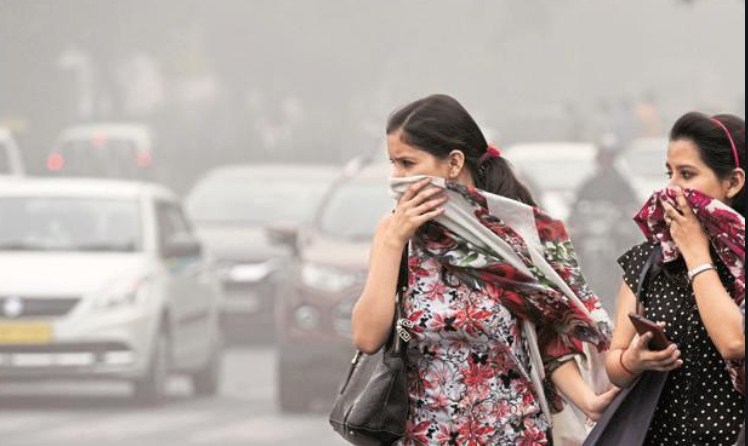Delhi air pollution likely to enter 'emergency' zone today;no improvement for next 2 days According to the Central Pollution Control Bureau(CPCB), Delhi's overall air quality index (AQI) read 425 at 4 pm and 437 at 9pm on Tuesday. It was 360 at 4 pm on Monday.The levels of PM 2.5 -- tiny particulate matter less than 2.5 microns in diameter that can enter deep into the lungs and even the bloodstream -- shot up to 337 micrograms per cubic metre,breaching its emergency threshold of 300, by 9 pm in Delhi-NCR.
In the case of PM 2.5, the safe level is 0-60 micrograms per cubic metre.
The levels of PM1 0 increased to 484 micrograms per cubic metre, nearly five times the safe limit of 100 micrograms per cubic metre. Mostof the 37 air quality monitoring stations across Delhi recorded air quality inthe severe category.The spike in pollution came on a day the Delhi governmentlifted restrictions under its odd-even road rationing scheme in view of the550th birth anniversary of Sikhism founder Guru Nanak Dev.Many people alsoreported violation of the EPCA-imposed ban on firecrackers in winters fromseveral parts of the city.
Wazirpur was the most-polluted areas in the city with an AQIof 465, followed by Bawana (464), Rohini (454), Mundka (458) and Anand Vihar(458).
Faridabad (413), Gurgaon (415), Ghaziabad (461), GreaterNoida (444), and Noida (453) also choked on extremely polluted air.
An AQI between 201 and 300 is considered 'poor', 301-400'very poor' and 401-500 'severe'. An AQI above 500 falls in the 'severe plus'category.Experts said the spike in pollution levels can be attributed to asignificant decline in wind speed. Incidents of stubble burning in Haryana andPunjab have increased and northwesterly winds have been bringing more farm fireplumes to the Delhi-NCR region, they said.
According to SAFAR, the share of stubble-burning accountedfor 25 per cent of Delhi's pollution on Tuesday, up from 18 per cent on Monday."Nosudden recovery is expected at least for the next two days and the AQI islikely to deteriorate further towards severe-plus category by tomorrow. Thecondition may slightly improve by November 15," it said in a report.
For around a week after Diwali, a pungent smog lingered overDelhi-NCR as a result of emissions from firecrackers, stubble burning andunfavourable weather.As the air pollution neared the emergency level onNovember 1, a Supreme Court-mandated panel declared a public health emergency andthe administration ordered the closure of schools till November 5.
Last week, the apex court had pulled up the Centre and stategovernments for their inability to curb stubble-burning in Punjab and Haryanaand bring air pollution in Delhi under control. It had asked the governments ifthey feel ashamed that people are no longer safe even in their houses.The topcourt had also ordered that all farmers be given a Rs 100 per quintal incentiveto prevent them from setting their fields on fire in preparation for the nextcrop and provide them free machines to get rid of the agriculture residue.
The period between October 15 and November 15 is consideredcritical as a maximum number of stubble-burning incidents take place in thisspan in Punjab and adjoining states, which is one of the main reasons for thealarming spike in pollution in Delhi-NCR.
Despite a ban on stubble burning in Punjab and Haryana,farmers continue to defy it amid a lack of financial incentives.
State governments are providing 50 to 80 per cent subsidy tofarmers and cooperative societies to buy modern farm equipment for in-situmanagement of paddy straw, but farmers say use of machines increases the inputcost manifold.According to an affidavit filed by the Centre in the Supreme Court,Haryana, Punjab and Uttar Pradesh distributed around 63,000 machines to farmersduring 2018-19. In 2019-20, as many as 46,000 machines have been distributed.
The Delhi Environment Minister had on Monday said,"There are around 27 lakh farmers in Punjab alone. If the same speedcontinues, it will take another 60 years for the machines to reach everyfarmer...It seems stubble burning will continue at the same pace next yeartoo."
Leave a comment
Your email address will not be published. Required fields are marked *


